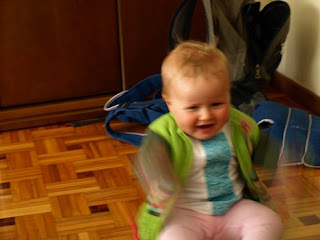 Have you ever wondered why the image looks blurry, even if you use a different camera and lens but the image still look blurry, with a bit of diagnosis, for that matter, there are several reasons why the picture looks soft.
Have you ever wondered why the image looks blurry, even if you use a different camera and lens but the image still look blurry, with a bit of diagnosis, for that matter, there are several reasons why the picture looks soft.1 You are Out of Focus
Of course the image couple be out of focus. might be the auto-focus missed your model and focused on something else. this is often kind of obvious and possibly isn’t a problem you’d be asking about.The subtler issue is how depth of field and aperture have an effect on softness. If you're using a wide open aperture – a low number – you get a really narrow area that is in focus. in this case your image would possibly look blurry because not all of it in focus.
2 It Is Really Motion Blur
In these days of Photoshop, we often think motion blur is just an effect, but it is also what happens when your model, or your camera moves while the shutter is open. We also often miss this when looking at the back of the camera because that image is so small and low rez motion doesn’t show up. But if you zoom in you’ll see it.Look at the eyes. Do you see more than one? Or a ghost image next to the other one? That’s motion blur.
Fix this by using a faster shutter speed. To avoid camera movement causing motion blur, the rule of thumb is your shutter speed should be higher than the length of your lens. And don’t forget the crop factor of non-full frame sensor.
For example, when I shoot with my 70-200 lens zoomed all the way in, my shutter should be at least 300. That lens happens to be a Nikon VR lens, so I don’t really have to be 300, but that’s the basic calculation.
3 You Should Have Shot RAW
Friends don’t let friends shoot JPEG.
Given a lot of our images are going on the web, at some point we need to make a compressed image – normally this is JPEG. Compressing these images takes some processing power. You could do this compression on the little CPU in your camera, or you could do it on the multi-core desktop computer you use for post processing your images. Guess which one is better?
With RAW on most cameras you also get at least 14bits of data, and that gets cut down to 8bits of data in the JPEG. That’s data that is just gone.
In the end this was my friend’s problem: when he opened some images in Lightroom that had been shot RAW, they were as sharp as can be.
Digital images are naturally a little soft. As a matter of fact if you look at a RAW image Lightroom before you make any changes, it will already have some sharpening done to it because Adobe knows the image is softer than it should be. But in reality you shouldn’t notice this softness.
When you notice softness and you didn’t plan for it (for instance using a big light source) there is generally something wrong. Hopefully you can figure out what it is using these three criteria.
Related Article : Fix a Blurry Photo in Photoshop
Source Article : http://www.photographerandmodel.com















